Laboratory Geophysics
Geophysics Instrumentation
After the establishment of the Geophysical Laboratory in 1905, research focused on bringing geology into the laboratory through quantitative physical and chemical approaches. Using the techniques and apparatus of the relatively new field of physical chemistry, director Arthur Day brought furnaces, calorimeters, and other apparatus to the lab. Images of the laboratory instruments purchased by and developed at the Geophysical Laboratory illustrate the diverse character of experimentation that was carried out in the early twentieth century by scientists at the laboratory.
 |
Ralph W. G. Wyckoff did pioneering work in crystal-structure determination in the 1920s using early X-ray diffractometers. With his help, E. Posnjak developed a twin-gas tube to generate X-rays. To house the X-ray cameras, a small lead-lined building was added onto the main building of the Geophysical Laboratory. (Image No. E071) |
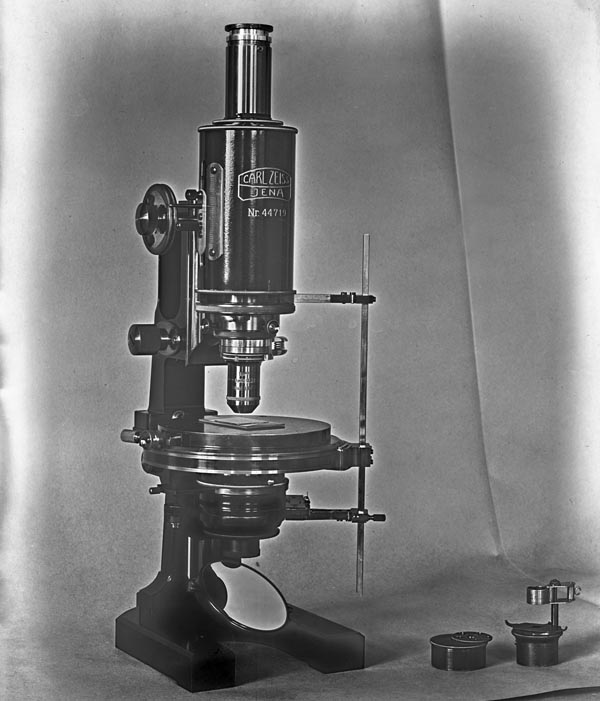 |
Geophysical Laboratory optician and geophysicist, Fred E. Wright, formulated extensive improvements to a petrographic microscope in 1910 to more accurately determine optical constants of mineral phases. (Image No. E002). |
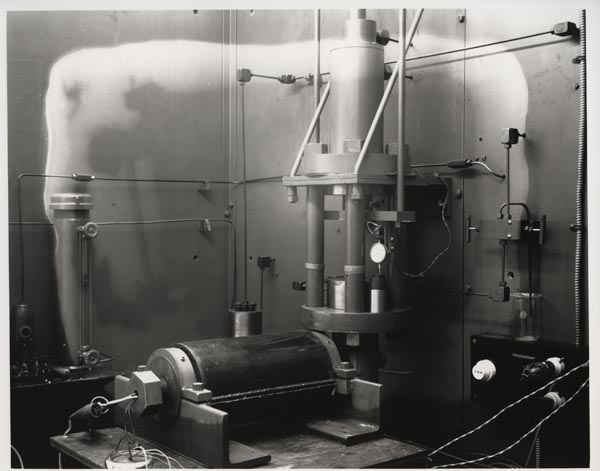 |
High pressure studies have been a core research focus of the Geophysical Laboratory since its founding. In one study in the 1950s, H. S. Yoder, Jr., designed a pressure apparatus for the study of hydrothermal systems with a working range that reached 1400 C and 10,000 bars. The image here shows the power leads, thermocouple leads, internally heated pressure vessel, piston, and ram chamber of Yoder’s system circa 1950. (Image No. E048). |
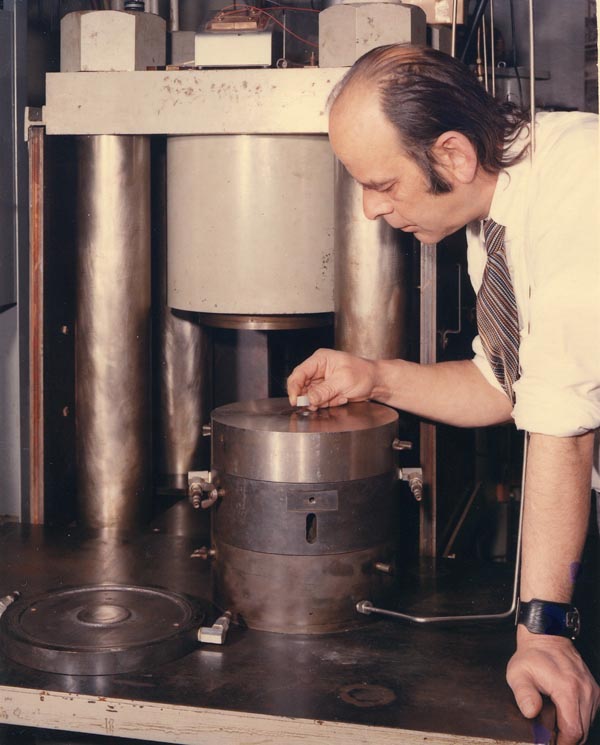 |
In collaboration with Geophysical Laboratory machinist Joe England, staff scientist F. R. Boyd (shown here) designed a two-stage piston-cylinder apparatus in the 1960s that was adopted by hundreds of scientists around the world for high-pressure research on diamonds and other mantle minerals. (Image No. E059). |
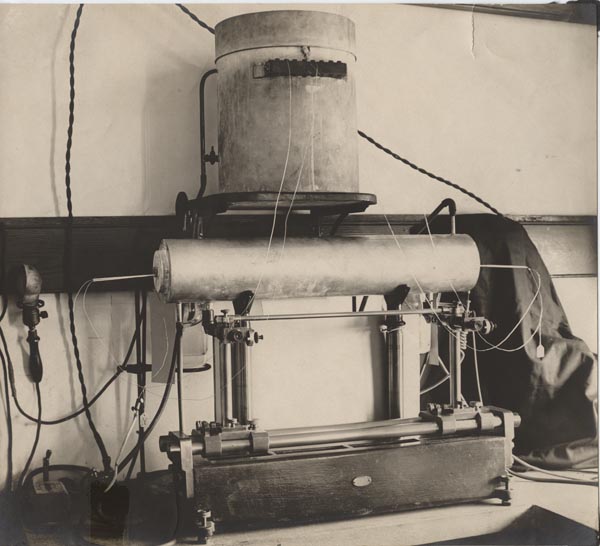 |
Replication of the high temperatures found in the earth’s interior has been another focus of the Geophysical Laboratory since its establishment. Shown here is the “expansion apparatus” designed by scientists Arthus Day, Robert Sosman, and E. T. Allen, circa 1908, to determine expansion coefficients of minerals over wide temperature ranges. (Image No. E012). |
Laboratory Interiors
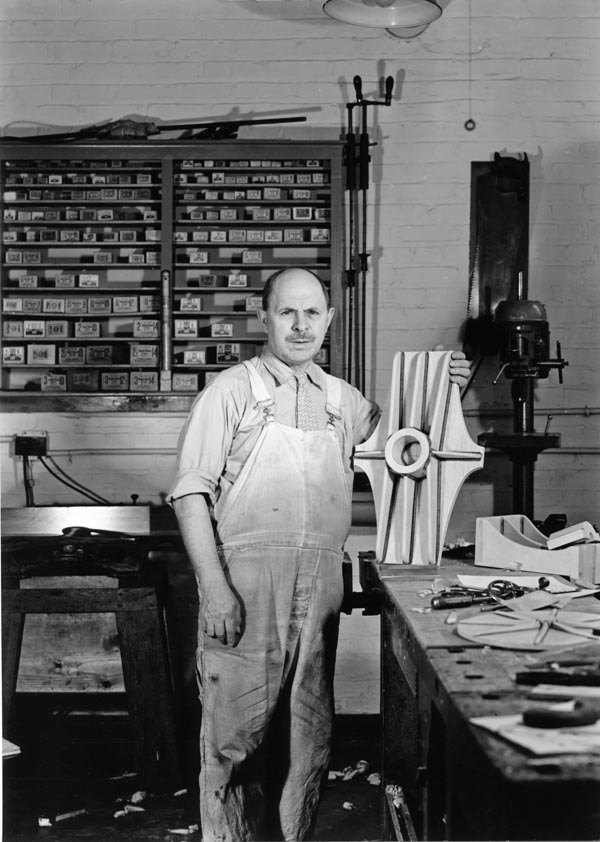 |
| DTM technician, A. Smith, with patterns for Duralumin castings of primary standard in 1939, Image No. I5293. |
The photograph collection is a rich source for images of scientific laboratory interiors of the early twentieth century. Rare photographs of the Geophysical Laboratory’s facilities at the U. S. Geological Survey building show the first Carnegie scientists amongst their laboratory equipment. The bulk of the images of laboratory interiors, however, were taken in the Spanish Renaissance Revival style building designed for the Geophysical Laboratory, which opened on Upton Street in northwest Washington, DC in 1907. The building included sophisticated chemistry, physics, and mineralogical laboratories as well as a machine shop, library, and various offices and studies. DTM interiors, including images of the instrument shop there, are also featured in the instrument photograph collection.
The first director, Arthur L. Day, and the others who established the Geophysical Laboratory envisioned broad research pathways for the department, with the intent of establishing experimental techniques to replicate natural processes in a controlled laboratory environment for the then field-dominated study of geology. In the first decades of the laboratory, research largely focused on the effect of high pressures and temperatures on the melting point, thermal conductivity, and elasticity of rocks. The laboratory photographs reflect this focus and demonstrate the interdisciplinary character of research that has distinguished the Geophysical Laboratory since its founding.
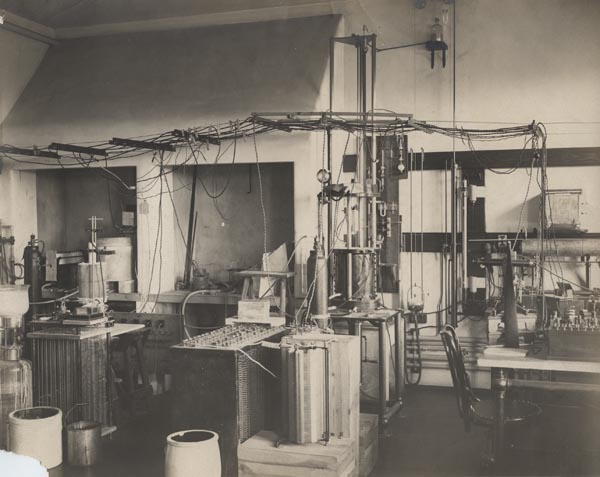 |
 |
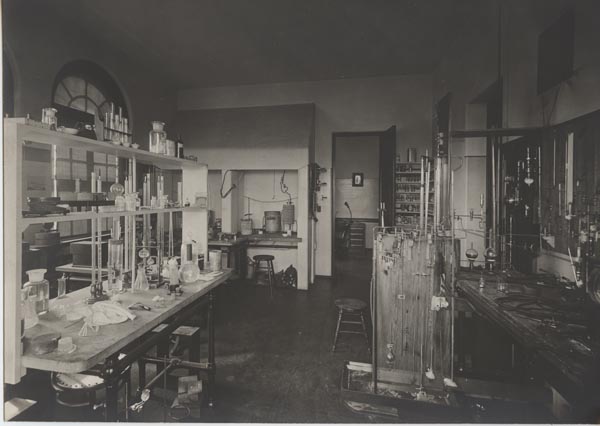 |
 |
| Arthur Day's high temperature laboratory , ca. 1911, Image No. E011. | Early high pressure laboratory at the Geophysical Laboratory, ca. 1912, Image No. E041. | Chemistry laboratory at the Geophysical Laboratory, ca. 1909, Image No. E083. | Machine shop at the Geophysical Laboratory, ca. 1909, Image No. E077. |
